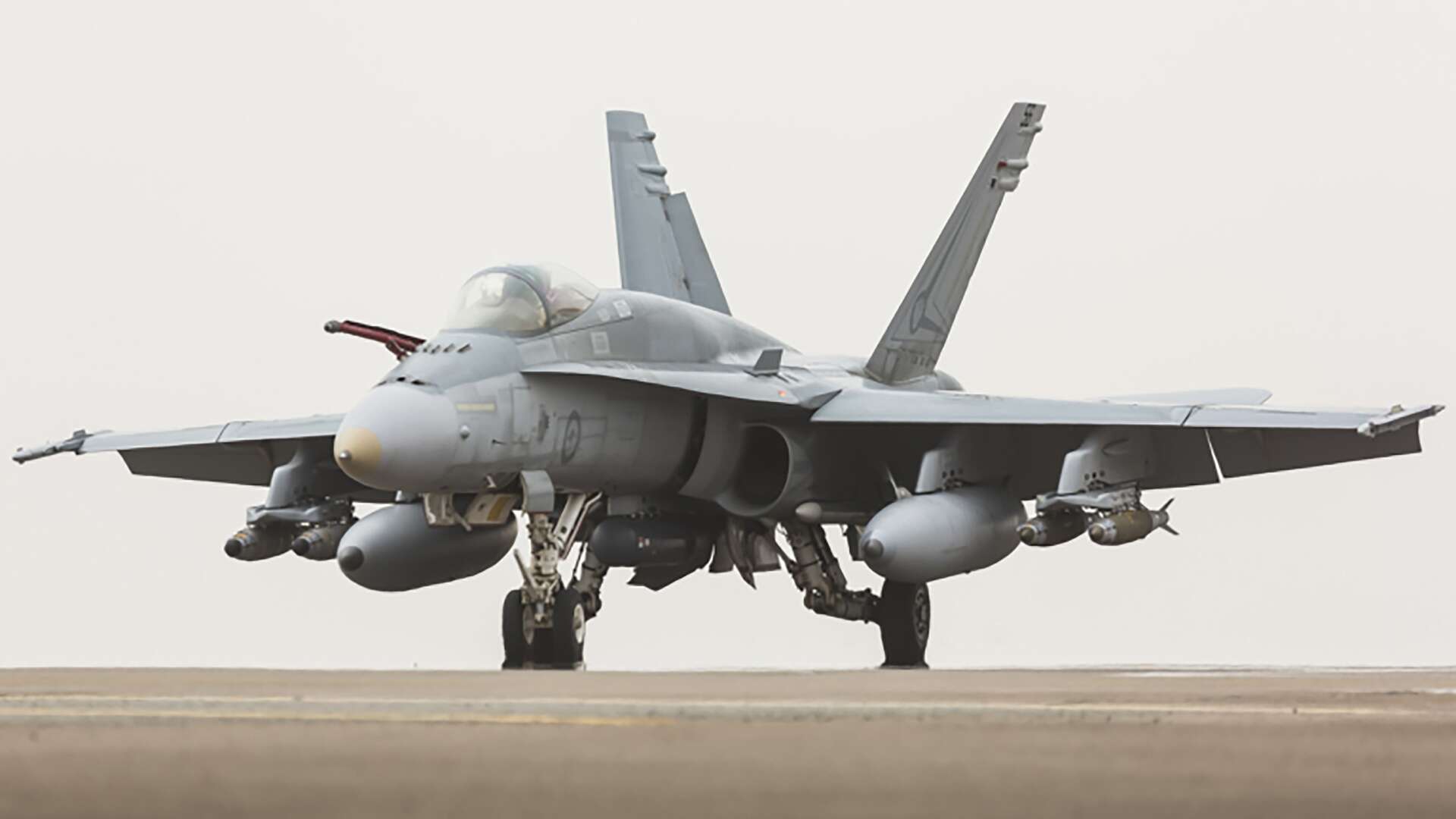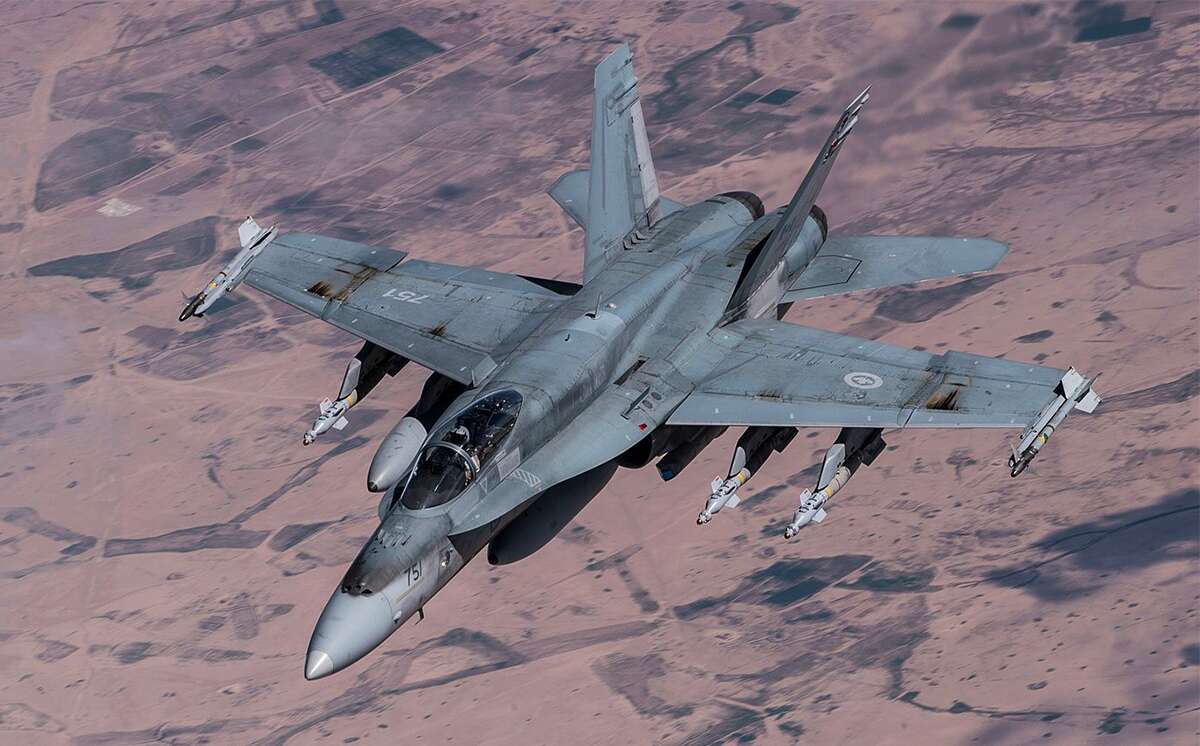Canada’s deal to purchase 25 used F/A-18A/B Hornets from Australia has received approval from the U.S. federal government. The acquisition is seen as essential by the Canadian Ministry of Defense as the roughly 75 CF-18 Hornets it has in service currently are in the twilight of the lifespans and will need major upgrades just to make through another decade of operations. The fleet is also becoming harder to support and it’s not like the world is getting any friendlier. The rise of a far more belligerent Russia that has taken a heavy interest in the Arctic is especially concerning.
The relations between leadership at the highest levels of the U.S. and Canadian governments have devolved in recent months due to a frosty relationship between President Trump and Prime Minister Trudeau and an unsolved trade dispute between the two historically chummy neighbors. This, combined with Canada walking away from its original Super Hornet interim purchase due to yet another trade dispute and the possibility that the Trudeau’s administration could put U.S. entrants into Canada’s upcoming next-generation fighter competition at a serious disadvantage led many to believe the Trump administration would work to hold up the deal.
With the required third party approval in hand, Canada and Australia look to close the deal by the end of the year, according to the National Post. If everything goes as planned, the first pair of jets would arrive in Canada in the Summer of 2019, with the rest following shortly thereafter. How they would be transported across the Pacific is still being decided.
Of the 25 jets being purchased, seven will be stripped and used as spares donors or for testing. The remaining 18 will go into service with the RCAF’s 3 Wing at Bagotville and with the 4 Wing at Cold Lake, the latter of which is the home of RCAF’s Hornet schoolhouse.
As for Australia, their legacy Hornets will be drawn down rather quickly as the F-35 comes online. We described this process as such in a previous article:
Australia originally ordered 57 F/A-18As and 18 F/A-18Bs, for a total of 75 airframes, in 1981. The vast majority of the jets were assembled in Australia. 71 are still flying today, which is pretty amazing in itself and a testament to the maintainers and pilots who worked with the fleet over the years. Australia’s Hornets are also close to the same block and age as Canada’s jets and have received similar upgrades throughout the years.
The plan is for the Australian Hornet fleet to be divested as a near equal number of F-35As—72 at this time but that number could grow—come online. The process that should be completed by 2023 with an initial operating capability (IOC) slated for 2020.
The ex-Australian jets will be flown without the structural upgrade that their CF-18 counterparts will receive, which would limit their service life but hopefully give Canada enough extra fighter capacity until the first of its next-generation fighters are delivered around 2025. Ottowa hopes to receive 88 of the new jets by roughly 2030, at which time the Hornet fleet will truly be on its last leg. The Canadian Ministry of Defense has stated that the fleet could make it to 2032 with upgrades, but no farther. It’s possible that the Australian Hornets could get the structural upgrade as well if the next generation fighter procurement timeline moves to the right.
Beyond structural enhancements needed to keep the 40-year-old fighters flying, combat capability upgrades will also likely be needed. The USMC, which is facing similar age-related issues with its own worn-down Hornet fleet, will have its Hornet cadre boosted by younger jets that will be leaving U.S. Navy service under the new NAVAIR fighter roadmap.
The Marines are also going to upgrade the best 98 F/A-18Cs in the fleet with AESA radars which will give the aircraft a massive capability boost. Other smaller upgrades are in the works as well. Canada could, or really should, do the same with their Hornets, which would allow them to take full advantage of the AIM-120D air-to-air missile that has already been approved for export to the country.
Canada’s relatively small fleet of Hornets has been taxed hard over its lifetime, including extensive combat operations in Europe and the Middle East.
It’s also possible that Canada could purchase more surplus Aussie Hornets even just for spares. Once they begin being retired en masse from RAAF flightlines, Canberra may be more motivated to unload them. Supposedly Canada has set aside $500M for the interim second-hand Hornet purchase. We have no clue what terms have already been agreed upon, but there could be additional money left over for extra airframes once the initial 25 make their way to North America.
We will continue to keep you up to date as the deal progresses.
Contact the author: [email protected]
Source: Read Full Article


